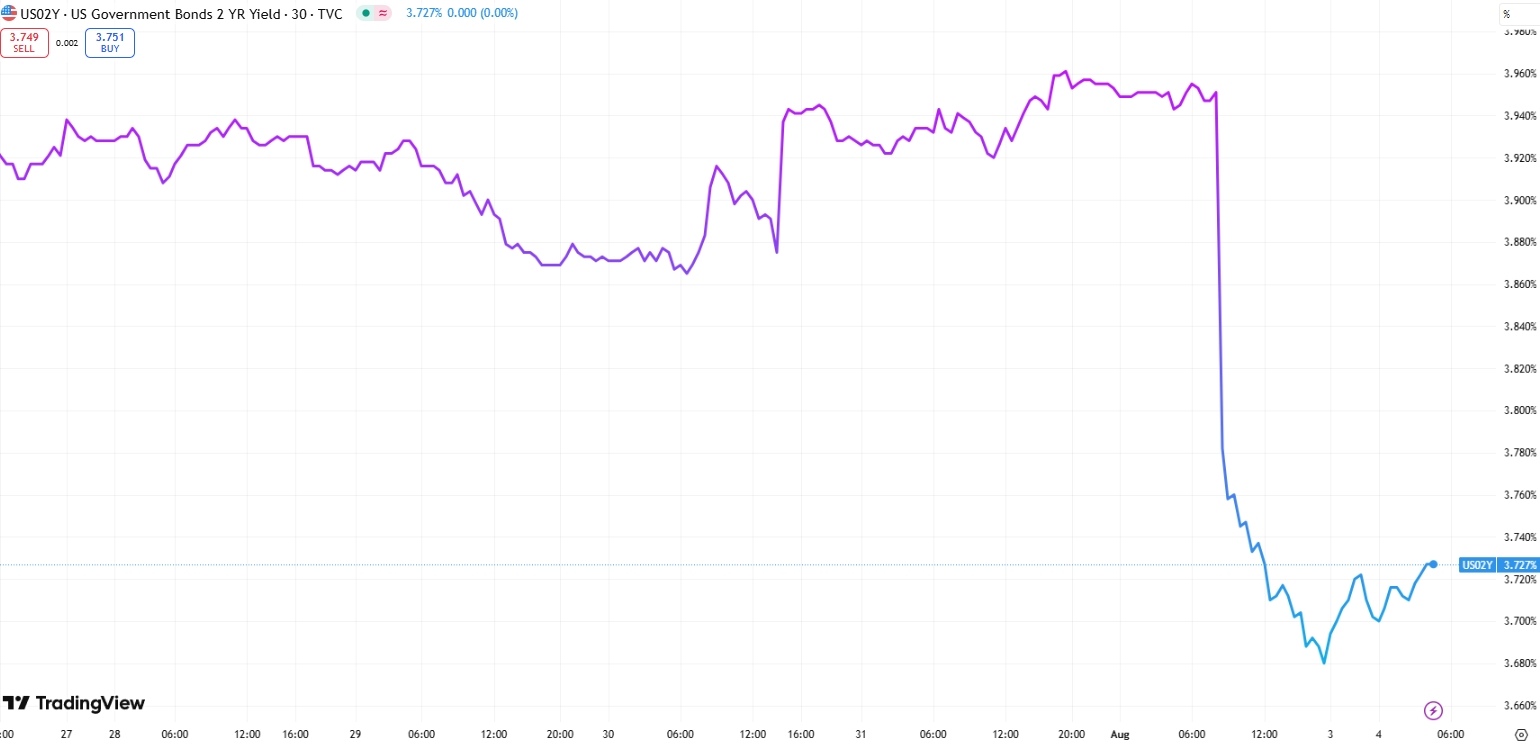Nonfarm Payrolls Spark a Treasury Short Squeeze — Steepener ‘Pain Trade’ Becomes the Winning Bet

TradingKey - The July U.S. jobs report and the sudden resignation of Federal Reserve Governor Adriana Kugler triggered a dramatic shift in bond market sentiment, fueling a massive short squeeze in U.S. Treasuries. On Friday, August 1, the 2-year Treasury yield plunged 28 basis points — the largest drop since early August 2024 — as bets on a steepening yield curve finally paid off after months of losses.
The July nonfarm payrolls report delivered a double blow: only 73,000 jobs added, far below expectations; May and June employment figures revised down by a combined 258,000 — the largest downward revision in 46 years.
The surprise deepened when, on the same day, Governor Adriana Kugler unexpectedly submitted her resignation.
President Donald Trump welcomed the opening, saying he would nominate a replacement within days. Analysts believe Trump will use the appointment to advance his agenda of lower interest rates and position a loyalist for the next Fed Chair race.
Treasury Bulls Rebound
As equity markets sold off on growth concerns, U.S. Treasuries surged:
- 2-year yield: down ~28 bps — largest daily drop since August 2024
- 10-year yield: down ~13 bps

U.S. 2-Year Treasury Yield, Source: TradingView
WisdomTree noted that the market is now pricing in a fundamentally different labor market — and few events could shift the narrative more than erasing 258,000 jobs from the record.
Rate Cut Bets Surge
The weak data has dramatically shifted expectations for Fed easing.
CreditSights, which previously expected rate cuts to begin in 2026, now forecasts a 50-basis-point cut in September, followed by two 25-bp cuts by December.
BlackRock also expects the Fed to start with a 50-bp cut in September, arguing that even a 100-bp cut would leave rates above inflation trends.
CreditSights added that the 10-year yield could fall to 3.5% faster than previously expected.
The Return of the Steepener Trade
For months, the yield curve steepening trade — betting that short-term rates will fall faster than long-term rates — was known as the “pain trade”, losing money through much of April to July due to choppy data and policy uncertainty.
But on Friday, as traders rushed to unwind short positions and reposition for imminent rate cuts, the spread between 10-year and 2-year yields widened sharply — reaching its largest level since April 10.
BlueBay Asset Management, part of RBC, said it still favors a steepening scenario, expecting wider spreads between 2-year and 30-year yields.
Mischler Financial Group noted that while Fed Chair Powell recently ruled out a September cut, the weak jobs report forced investors to cover short positions — a classic squeeze dynamic.
Caution Remains on Inflation
Despite the dovish shift, JPMorgan remains cautious about the timing and pace of rate cuts, citing ongoing inflation risks from higher effective tariff rates.
The bank recommends increasing overall duration exposure but reducing aggressive steepener positions, warning that long-end yields could rise again if inflation pressures re-emerge.







